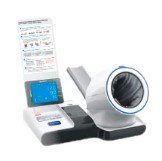Ensuring Accurate Urine Culture Testing: Best Practices and Guidelines
Summary
- Proper sample collection is crucial for accurate urine culture testing results.
- Following strict lab protocols and procedures is essential in preventing contamination.
- Regular maintenance and calibration of equipment can help ensure accuracy in testing.
Introduction
Testing for a positive urine culture is a common practice in medical laboratories across the United States. This type of testing helps diagnose urinary tract infections and other urinary system disorders. However, obtaining accurate results is crucial for proper diagnosis and treatment. In this article, we will discuss the steps that should be taken in a medical lab to ensure accurate results when testing for a positive urine culture.
Proper Sample Collection
One of the most critical steps in obtaining accurate urine culture Test Results is proper sample collection. The following are some essential guidelines to follow when collecting urine samples:
Clean-Catch Technique
- Provide the patient with clear instructions on how to collect a clean-catch urine sample.
- Ensure that the patient washes their hands before collecting the sample.
- Use a sterile container to collect the urine sample.
Midstream Collection
- Have the patient start urinating into the toilet, then stop midstream and collect the sample in the container.
- Avoid letting the container touch the skin to prevent contamination.
Labeling and Transport
- Label the sample correctly with the patient's information and date and time of collection.
- Transport the sample to the lab promptly for testing to prevent degradation of the sample.
Strict Lab Protocols and Procedures
Following strict lab protocols and procedures is essential in preventing contamination and ensuring accurate results when testing for a positive urine culture. The following steps can help maintain a sterile lab environment:
Proper Lab Attire
- Lab personnel should wear appropriate protective gear, including gloves, lab coats, and face masks.
- Regularly change gloves and wash hands between Sample Handling to prevent Cross-Contamination.
Cleaning and Disinfection
- Regularly clean and disinfect lab surfaces and equipment to prevent the spread of bacteria and other contaminants.
- Use appropriate disinfectants and follow manufacturer guidelines for proper cleaning procedures.
Sample Handling Procedures
- Follow strict Sample Handling procedures to prevent contamination during testing.
- Ensure that samples are properly sealed and stored at the correct temperature to maintain Sample Integrity.
Equipment Maintenance and Calibration
Regular maintenance and calibration of lab equipment are essential to ensure accurate results when testing for a positive urine culture. The following steps should be taken to maintain equipment integrity:
Regular Maintenance Checks
- Perform regular maintenance checks on lab equipment to ensure proper function and accuracy.
- Calibrate equipment according to manufacturer guidelines to maintain accuracy in testing.
Quality Control Measures
- Implement Quality Control measures to ensure that equipment is functioning correctly and producing accurate results.
- Participate in Proficiency Testing programs to validate lab results and ensure accuracy in testing.
Equipment Validation
- Validate equipment performance regularly to ensure accurate and reliable results when testing for a positive urine culture.
- Keep detailed records of equipment maintenance and calibration procedures for reference and verification.
Conclusion
Obtaining accurate results when testing for a positive urine culture in a medical lab is essential for proper diagnosis and treatment of various urinary system disorders. By following proper sample collection techniques, adhering to strict lab protocols and procedures, and maintaining and calibrating lab equipment, Healthcare Providers can ensure accurate and reliable results for their patients.

Disclaimer: The content provided on this blog is for informational purposes only, reflecting the personal opinions and insights of the author(s) on the topics. The information provided should not be used for diagnosing or treating a health problem or disease, and those seeking personal medical advice should consult with a licensed physician. Always seek the advice of your doctor or other qualified health provider regarding a medical condition. Never disregard professional medical advice or delay in seeking it because of something you have read on this website. If you think you may have a medical emergency, call 911 or go to the nearest emergency room immediately. No physician-patient relationship is created by this web site or its use. No contributors to this web site make any representations, express or implied, with respect to the information provided herein or to its use. While we strive to share accurate and up-to-date information, we cannot guarantee the completeness, reliability, or accuracy of the content. The blog may also include links to external websites and resources for the convenience of our readers. Please note that linking to other sites does not imply endorsement of their content, practices, or services by us. Readers should use their discretion and judgment while exploring any external links and resources mentioned on this blog.
